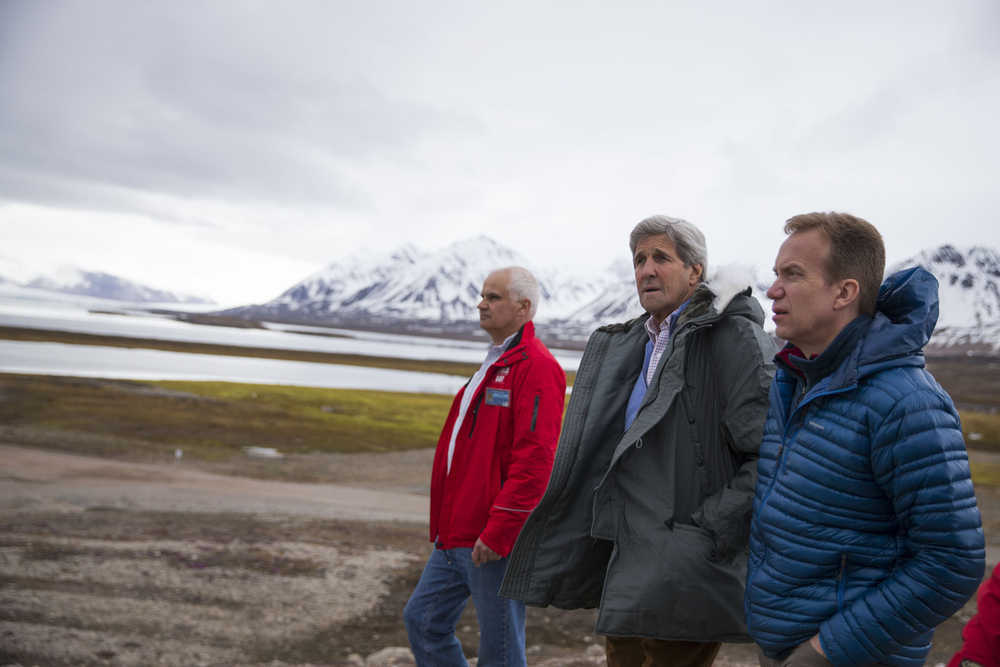NY-ALESUND, Norway — U.S. Secretary of State John Kerry on Thursday visited Norway’s extreme north, viewing areas where climate change has melted ice and opened new sea lanes.
Trailed by staff and journalists in small Zodiac-type inflatable boats, Kerry and Norway’s foreign minister motored in an Arctic scientific vessel from a research station in Ny-Alesund, the world’s northernmost civilian settlement. The short cruise took Kerry and his delegation across the iceberg strewn Kongsifjorden (King’s Bay Fjord), where puffins and other Arctic birds skirted the waters, to the Blomstrand Glacier.
The glacier has receded significantly in the past 25 years to 30 years, with summer temperatures that can now be 8 degrees and 11 degrees higher than they once were, according to Jan-Gunnar Winther, the director of the Norwegian Polar Institute, who guided Kerry and Foreign Minister Borge Brende.
“It’s stunning,” Kerry told reporters from aboard the vessel as it idled in front of the massive ice wall. “This is the center of change within the center of change.”
As America’s top diplomat, Kerry has made the health of oceans and combating the effects of climate change a priority, and he will host an international conference on oceans in September, the third such event he has organized since taking office in 2013.
“We’re not on the pace we need to be” to reverse the effects of climate change, Kerry said. He called for renewed efforts to move away from fossil fuels to clean, renewable energy.
“Even where there is awareness, the steps that people are taking are not big enough fast enough,” Kerry said. “So, we have a huge distance to travel.”
Kerry was a champion of the global change agreement reached in December in Paris that seeks to hold the temperature change to 2 degrees Celsius (3.6 degrees Fahrenheit), although he said ideally the world would agree to less than 2 degrees.
“If we move more rapidly to the various other clean energies that already exist, we hope to be able to meet what we need to preserve a level of temperature increase that’s supportable, survivable,” he said. “We’ll get there hopefully.”
After the visit to Norway’s portion of the Arctic Circle, Kerry planned to see icecaps in Greenland after a stop in Copenhagen. Both trips were intended to highlight his concern about climate change and oceans ahead of the September conference.
The ice-loss-driven opening of the Arctic Ocean has led to competition among several nations for its resources and access to newly available sea lanes for commercial maritime trade. U.S. officials say both Russia and China are preparing to exploit those possibilities and that the United States should take note.
On his brief visit to the glacier, Kerry did not address those issues and seemed more impressed by the beauty of the bluish ice.
“It’s stunning,” Kerry said. “The power of nature and the importance of our respecting it.”
He then pulled out a smartphone to take pictures of the Blomstrand Glacier as his boat turned to head back to the research station.

